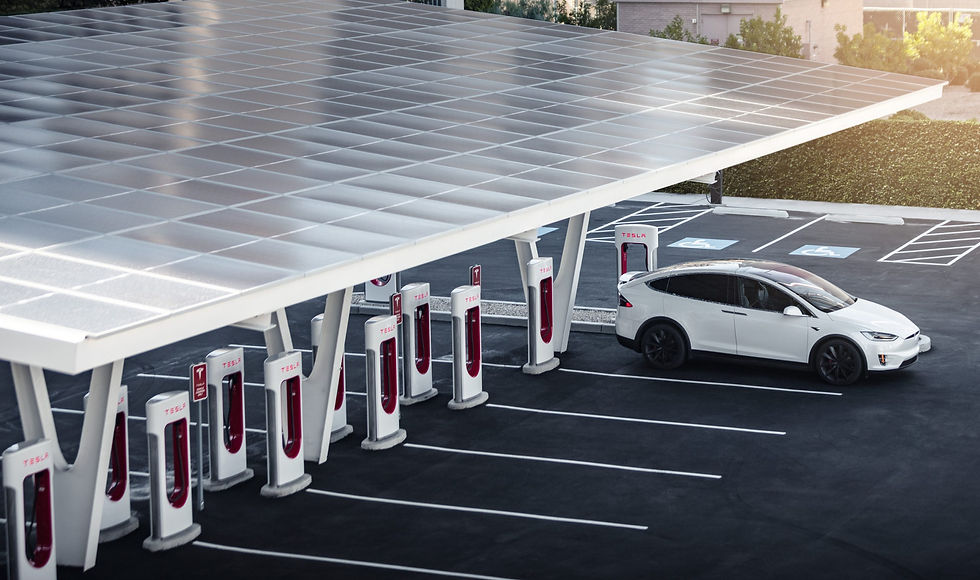The Stability and Sustainability We Need
- bevanson3
- Oct 23
- 3 min read
In 2021, Winter Storm Uri smacked Texas upside the head. So much of the state was hammered by unbelievably intense cold and stormy weather that there were approximately 150 deaths ultimately attributed to it. As is often the case, senior citizens make up some of the most vulnerable populations we have, and nursing homes were particularly hard hit, when the power grid failed. Similarly, rural areas with their comparable lack of resources to metropolitan areas were significantly affected by the effects of Uri. One positive development to come out of Uri was the deployment of an at the time unique type of backup generator, that is growing in popularity. When parts of the power grid in the Houston area were failing, stories began to pop up about people with just-released newly purchased plug-in hybrid (PHEV) Ford F-150 Lightning pickups that were using the trucks' factory on-board generators to power their homes to keep light and heat going during the storm.

Designed to provide contractors and other such professionals the ability to use their trucks to power their jobsite tools, the generators weren't designed to handle a large facility such as a school or nursing home, but they validated the concept in a most convincing way, and more and more PHEVs and full EVs now have a similar ability to serve as a backup generator for an owner's residence.
As noted in this article in Governing, Texas has made changes, by establishing the Texas Backup Power Package and funding it to the tune of $1.8 Billion. The purpose of the plan is to provide a measure of stability by the inclusion of backup power systems and microgrids in critical facilities and rural areas. This is a fantastic development, one that should frankly be emulated by states all over the country, including my home state of California. Granted, outside of certain areas such as Lake Tahoe, the Yosemite-adjacent communities of Oakhurst, Mariposa, and Sonora, and So Cal mountain communities such as Alpine, Julian, Gorman, Running Springs, and Lake Arrowhead, most of California would not expect to experience a deadly winter storm such as Uri. That being said, California is at frequent risk of floods and mudslides, and near constant risk of wildfires. Combine that with the growing demand for electricity due to legislation mandating electrification of new construction plus the growing demand for electric vehicles, and clearly there is a need to look at power backups to ensure stability and resilience of the power supply, even when not facing a catastrophe like a wildfire or earthquake. And as anyone who has lived in California recently knows, the statewide grid is old, not hardened against physical disasters, not really hardened against cyberattacks, and pretty much at capacity just for daily demand. Stories about up and down the state from the various electrical utilities, including San Diego Gas & Electric (SDGE), Southern California Edison (SCE), and Pacific Gas and Electric (PGE) just to name the big three, about rolling brown and blackouts, the most ironic one being just a few days after Governor Newsom signed legislation mandating the end of sales of new gasoline powered cars and trucks by 2035 in the state.

Clearly Texas has the right idea, even if the idea of using generators powered by fossil fuels is anathema to the environmental preferences of California legislators. Options do exist, including battery storage via wind, geothermal, hydro, and solar power. Personally, I have been arguing for a nationwide infrastructure program not unlike JFK's moonshot or the Cold War defense surge of the 1960s thru the 1980s, one that would channel substantial enough funding for the development of, among other infrastructure components, an updated power grid. One designed and built with security, stability, and resilience at the forefront, and I was sorely disappointed that we weren't able to get that going out of President Obama's efforts at stimulation during the Great Recession. And if California is unable to establish a statewide program to do that within its borders, local jurisdictions can certainly look at adopting standards and requirements similar to those in Texas. They could be established in the master planning or entitlement stages of development, or (particularly in jurisdictions that have enhanced electrification standards within "reach codes" adopted to compliment California Building Code requirements. Similarly, local agencies can also explore zoning and entitlement standards for battery storage facilities and other green energy components. If local city and county agencies throughout California are able to enhance the stability and resilience of their local infrastructure while further promoting green energy, it can help push the State and local utilities in the right direction in providing a power grid and other infrastructure that can not only get us through life and the disasters that can occur in daily life, but also help prevent some of those disasters from happening.






Comments